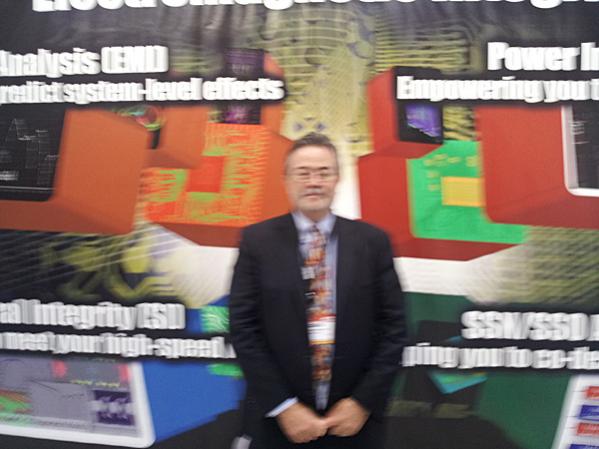Dr. Raul Camposano, CEO of Nimbic talked with me on Wednesday at DAC to provide an update on what’s new with their electromagnetic simulation tools.
Industry trends – Electromagnetic simulation to create S-parameters that are frequency dependent. Used for analysis of packages and boards, because distances are getting smaller, especially at GHz speeds.
EM simulation is important when distance of interconnect is close to wavelengths.
Trends: Frequencies are getting higher, especially with smart phones at 2GHz, and high speed channels like Thunderbolt and PCIe.
More complex packaging like 3D packaging with Package on Board, SIlicon Interposers, TSV, require some analysis.
What’s New in 2012:
1) Unleash the power of parallel to compute simulations in a reasonable run time using multi-core or compute farm. Multi threaded architecture, clusters of computers connected by a LAN with MPI (across many computers, large problems use 64GB to 256GB of RAM), using distributed computing on a grid or in the cloud. Can solve different frequency points on different computers, or different signals on different computers.
Typical would be 5 computers with 8 cores each, total of 40.
In house used over 1,000 cores with parallelism, about 500 to 600X speed up compared to a single core.
2) Sign off – not so well known for boards and packages, although gaining in popularity. EM sign off requires EM simulation, extract parasitics, then simulate SI effects. For high speed channels model the Transmitter, channel, Receiver system. EM simulation creates S-Parameters for frequency dependence, SPICE simulation run, eye diagram evaluated for clean ness of signals.
WHo uses your EM simulation? Anyone designing a fast channel, PCB designer, or package designer.
3) Largest capacity and scales well compared to any competitor.
Customers: TI, Toshiba, Renesas, Panasonic, Tabula.
Japan – distributor used.
USA – direct.
Korea – distributor.
Europe – contact USA office.
nApex – Accelerated Extraction of SPICE Models for Chip-Through-System Designs
12 months from now – ramping sales.
Size of company: about 27 people, half in Chile half in Mountain View, some Austin. Started in Seattle from U of Washington, moved to Mountain View.
Venture funded.
Share this post via:








Quantum Computing Technologies and Challenges